Global Style
From hedge clippers to balancing elephants, the 20th annual Rx Club Awards honored a display of ads featuring the most creative concepts from around the world.
The Rx Club Awards was conceived 20 years ago as a celebration of the most creative pharmaceutical advertising campaigns. This year, the buzz surrounded the sheer volume of international entrants, many of which walked away with first- and second-place honors, and the push for powerful images over text-heavy ads. Of the nearly 2,000 submissions, 40 gold and silver winners stand out as benchmarks for design and originality in pharma marketing.
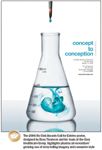
A Foreign Affair
Since its inception, the Rx Club Awards have honored agencies from the United States and abroad. But this year more than others, judges were especially impressed with the pharma ad work being done globally, particularly in India.
"There seemed to be a broader range of international entries," says Rx Club Awards founder Ina Kramer. "We had so many foreign countries participating."
An influx of ads from India, Australia, and South America raised the creative bar on a worldwide level.
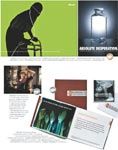
"India is right now on a boom," says Anand Krishna, associate account director at Sudler & Hennessey, India. "We are on the radar for IT outsourcing, training, and definitely advertising. The Rx Club Awards has given India a platform to showcase our healthcare communication work." This is particularly important because, in India, companies are not allowed to advertise drugs to consumers. "So, every day is a challenge to come up with new media," says Krishna.
Sudler & Hennessey took home the most honors, garnering two gold and four silver awards between all of its global offices. S&H India's gold-winning campaign for Dr Reddy's Laboratories took many of the judges by surprise. It featured multiple six-foot-wide mirrors placed strategically around cities, forcing pedestrians to notice their legs—and a message on the glass: Diabetes-induced foot ulcers can cause leg amputation.

"These kinds of ads are global, so if you can understand the concept without words, or with few words, then that's a killer concept," says Annie Wu, art supervisor at FCB Healthcare and a 2006 Rx Club Awards judge.
Mike Devlin, executive creative director at CCA Advertising, says that many of the ads that made him pause and smile came from BBDO Mexico, including "Cigarette Obsession"—developed for Pfizer's Nicorette—which shows how everyday activities, like drinking alcohol, present roadblocks to quitting smoking.
"I think the trend is towards simplicity," Devlin says. "A lot of the foreign agencies, perhaps by design and perhaps by necessity, are looking for more global campaigns that have universal appeal."

Design for the Times
There were fewer "slice of life" ads presented this year. Instead, more abstract, creative designs captured judges' attention. Ad execs kept things simple, choosing to forego text-heavy designs. The number of interactive and video entries were consistent with last year's submissions, but the actual number of winners dropped.
"The ads that stood out had the strongest design," says Charlotte Noruzi, group art supervisor of Flashpoint Medica. "It's very important to me that an ad is designed as sophisticated as possible. As crucial as concepts and messages are, if the design isn't there, and it doesn't showcase the product, the brilliance of the concept gets lost."

Grey Healthcare Group also received high accolades for its call-for-entries print ad, "Concept to Conception," which depicts a drop of paint landing in a flask and forming a fetus. The image is moving and provocative, with little need for text.
"It's just a visual that tells a story very quickly and beautifully at the same time," says Tim Fening, vice president and creative director of Bridge Worldwide. "You have to hook the audience into the promise that you do have content, it just might not be on that ad. You can direct the viewer somewhere else, like a Web site, for that content."
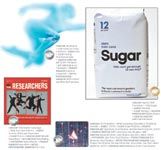
Consumer Style
The debate continues over whether pharma advertising should take a consumer approach to design. This year, the Rx Club Awards entries included more ads with a touch of satire, including GSW Worldwide's gold-award-winning posters for its charitable initiative called Grace. The posters spoofed popular ads from Apple, Marlboro, and Nike.
"In general, advertising for pharma is getting much more consumer-oriented, because people who work on it want to explore beyond the usual cell or X-Ray ad," says Alex Fishgoyt, vice president and creative director at Harrison and Star.

Abelson-Taylor's gold-winning campaign for sleep aid Rozerem struck an emotional chord with judges. The ad depicts sleep-deprived people longing for the strange dreams they used to have when they could sleep soundly. Both the consumer and physician ads for the product come off as fun and enlightening.
"It's not about being serious or being funny," Devlin says. "It's about engaging the audience and not forgetting that you need to capture their attention, whether they are a consumer or physician."
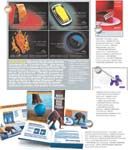
Attention, Attention
Direct mailers were physically bigger and more elaborate this year, as competing marketers vie for doctors' attention, says Marjorie Vincent, creative director of Harrison and Star and a 2006 Rx Club Awards judge. She points to Wishbone's silver-award-winning campaign for Wyeth's osteoarthritis drug Synvisc (Hylan), which shows a giant pop-up elephant stepping on a rubber ball, with a caption: "When crushing knee pain strikes."
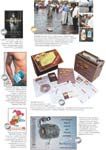
"It's so graphic that it has to capture the reader's attention," Vincent says. "The idea of an elephant standing on your kneecap immediately expresses the idea of pain."
The growing use of voice chips in direct mailers perked many judges' ears and led to a handful of honorable mentions.
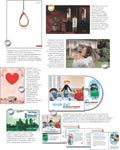
"I'm not quite sure that that's the acme of creativity, but it's definitely a trend," Fening says. "Direct mail needs to get attention. When doctors or staff open it up and it has a voice chip, it's another way to send a message."
One trend that some judges wish would go away is the use of massive text on physician ads. While some agencies have made a conscious effort to improve their designs, others can't shake the habit of using huge fonts and headlines.
"Doctors are not patients, they are not visually impaired, so why are we using 40 point type on the page?" Fishgoyt asks. "It just makes the layout more cluttered."

Similar comments were made about a number of ads that featured charts. The consensus was that any information that can be put in a chart, can instead be bullet pointed for more impact and style.
"Catching a doctor's attention in a focused, unique way is the best piece of communication," says David Garson, senior vice president and creative director of art at The CementWorks. "If you don't do that, they aren't going to stop long enough to read the content."
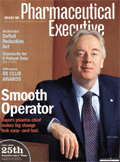
The Misinformation Maze: Navigating Public Health in the Digital Age
March 11th 2025Jennifer Butler, chief commercial officer of Pleio, discusses misinformation's threat to public health, where patients are turning for trustworthy health information, the industry's pivot to peer-to-patient strategies to educate patients, and more.
Navigating Distrust: Pharma in the Age of Social Media
February 18th 2025Ian Baer, Founder and CEO of Sooth, discusses how the growing distrust in social media will impact industry marketing strategies and the relationships between pharmaceutical companies and the patients they aim to serve. He also explains dark social, how to combat misinformation, closing the trust gap, and more.